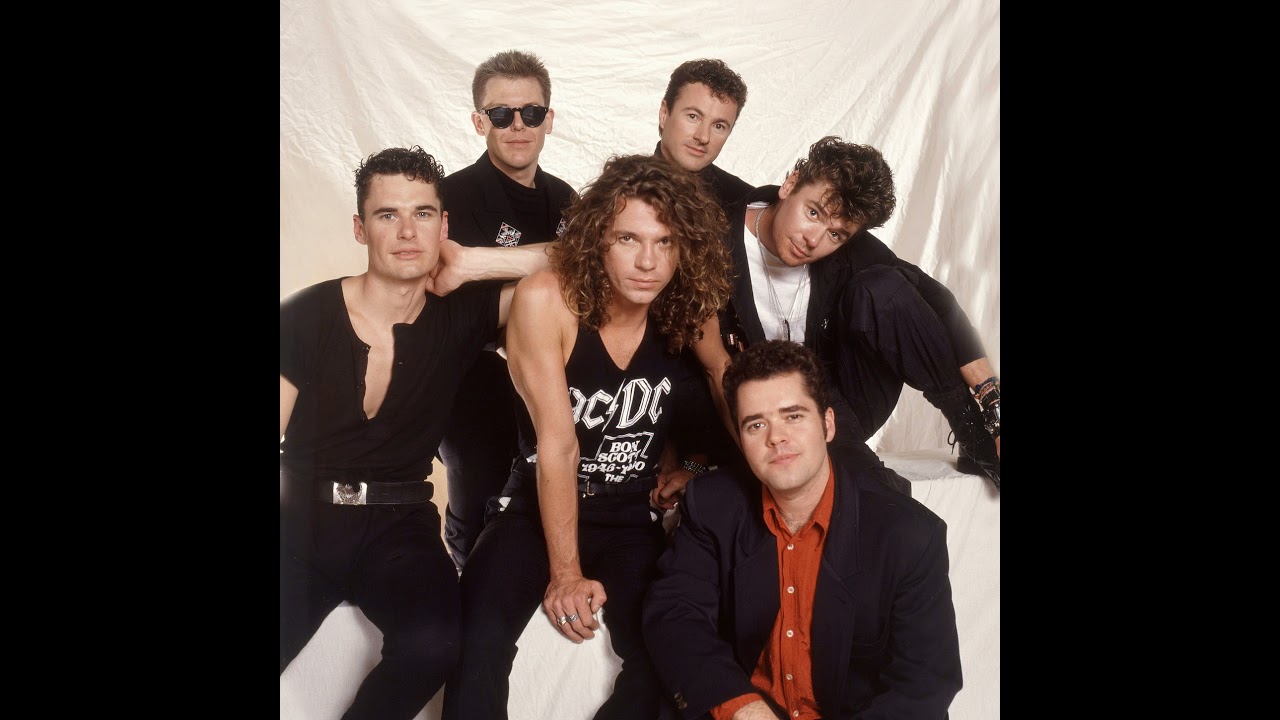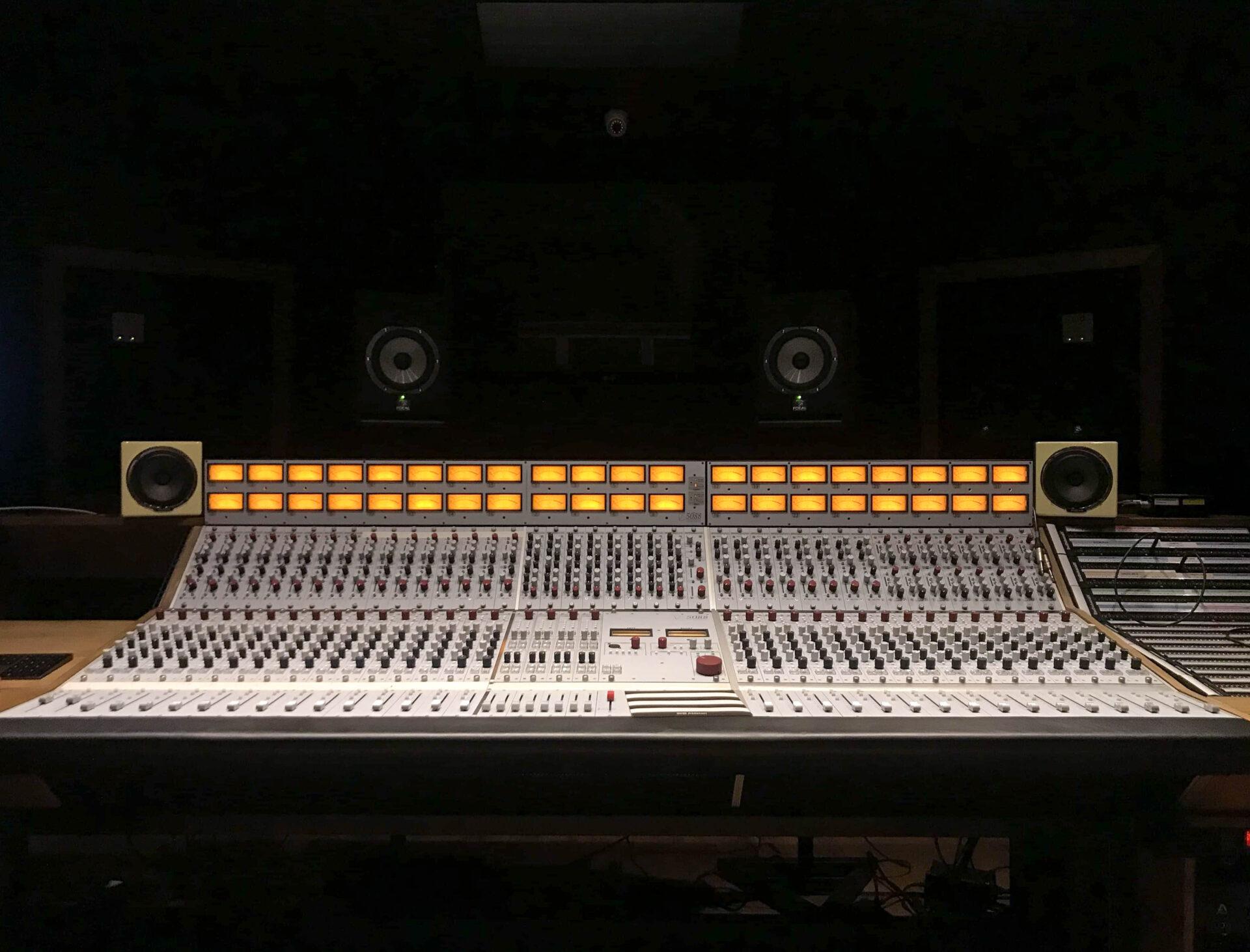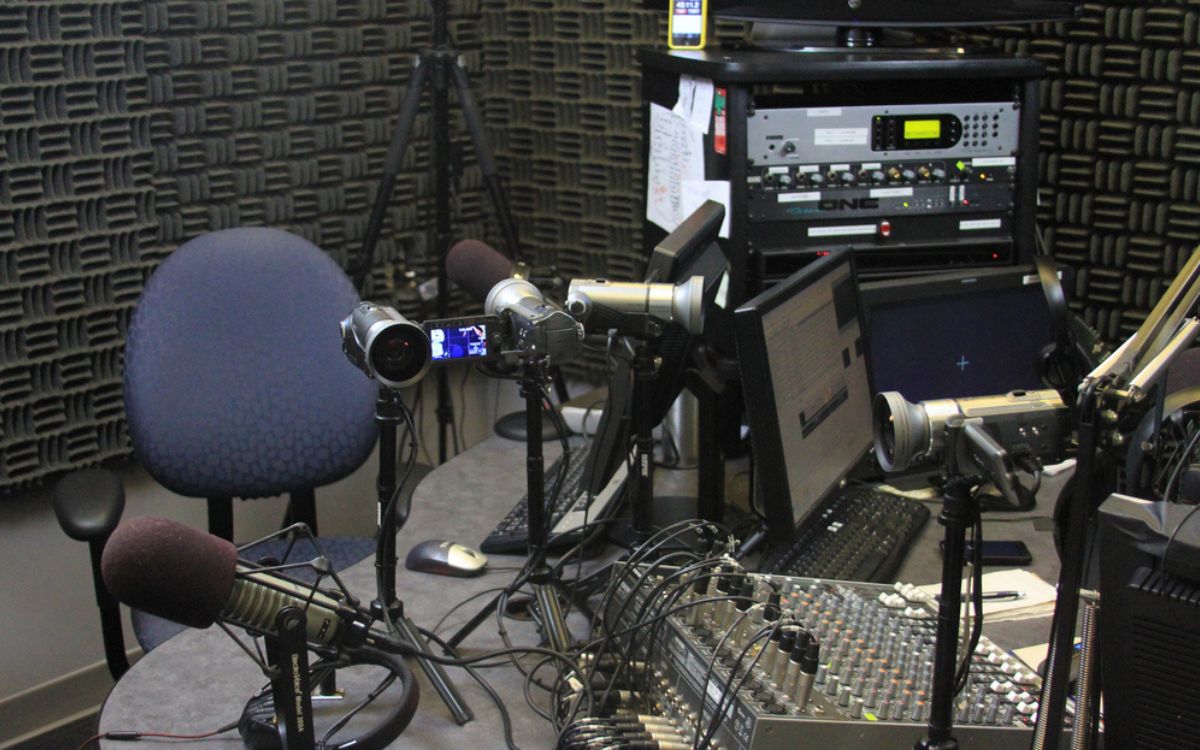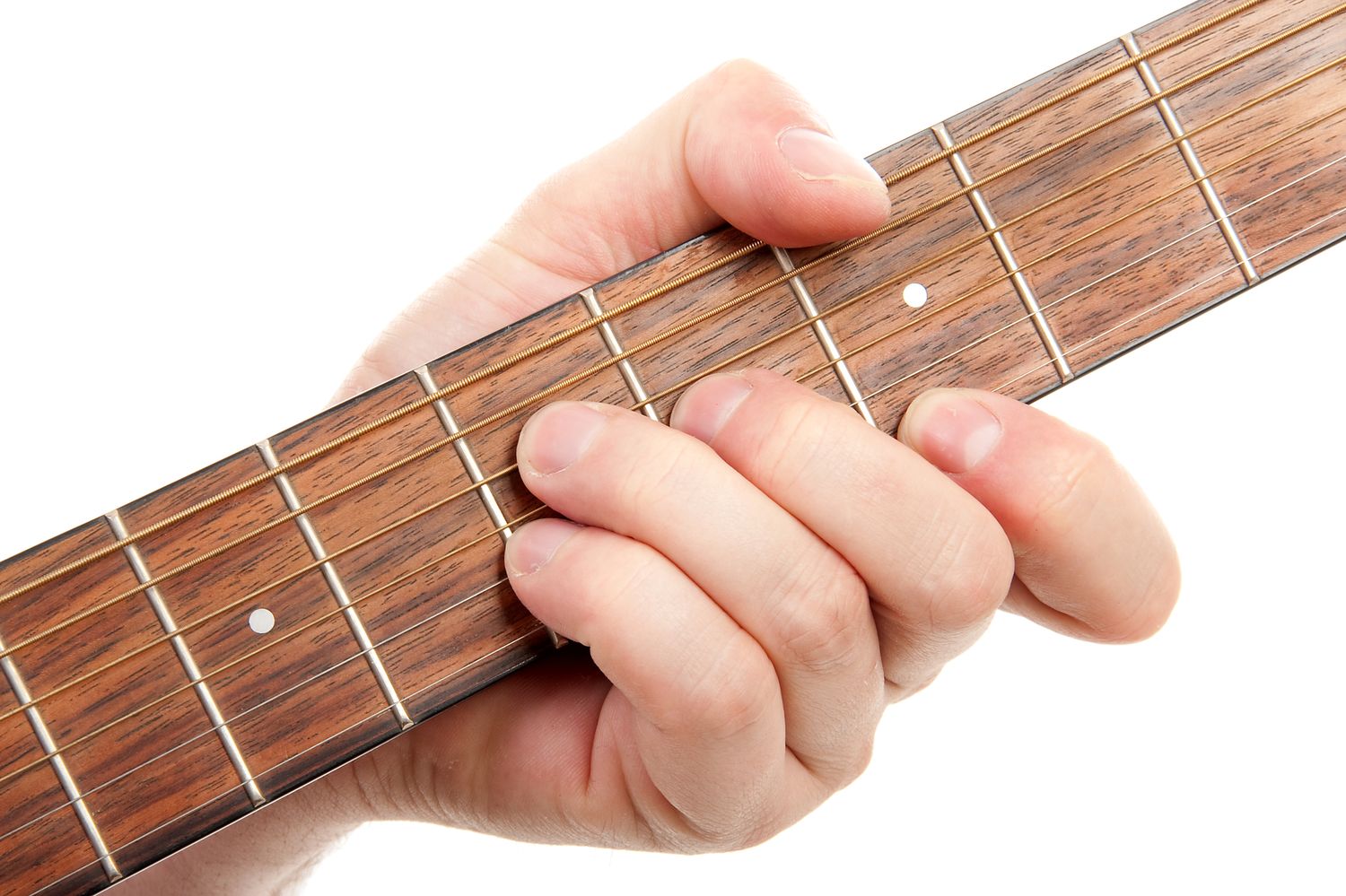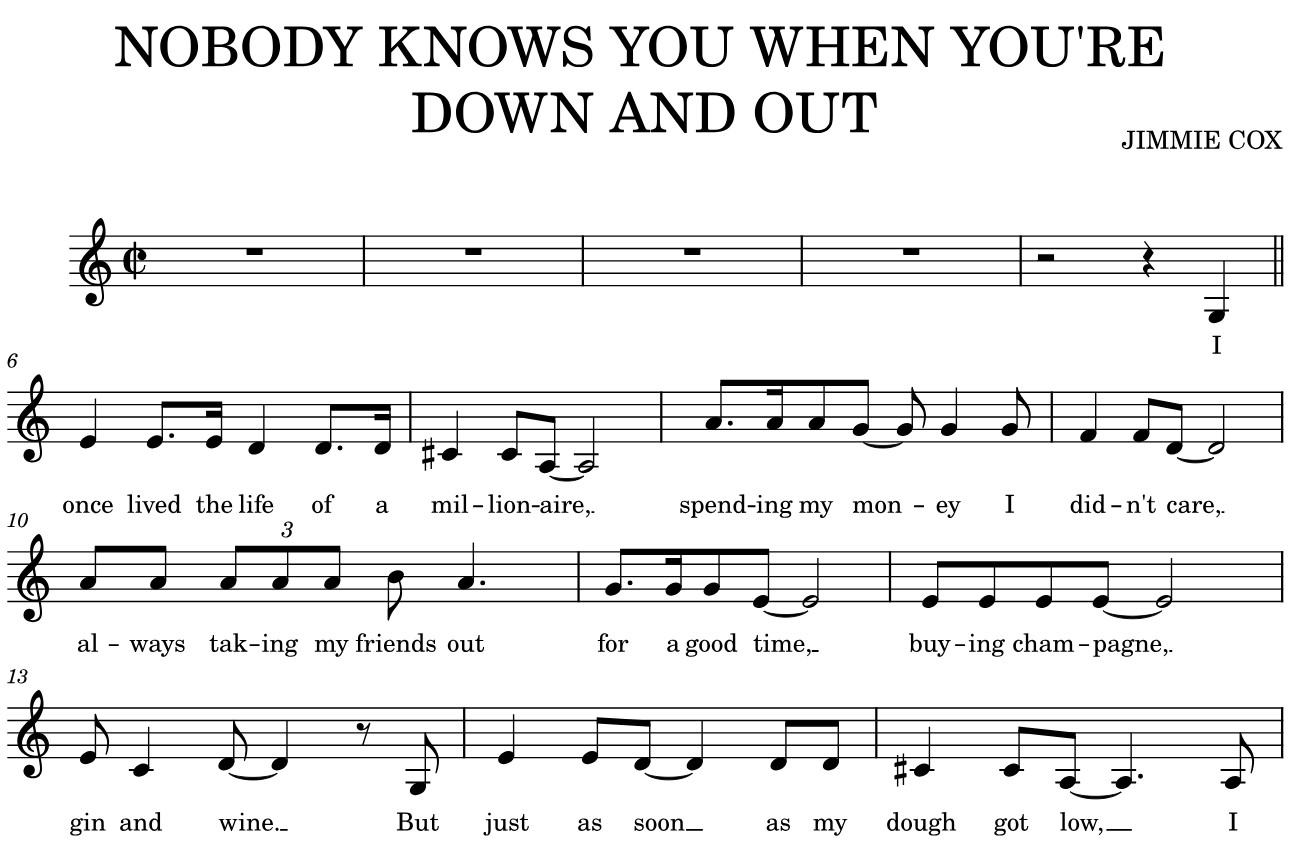Home>Production & Technology>Music Theory>What You Need To Know For Basic Music Theory
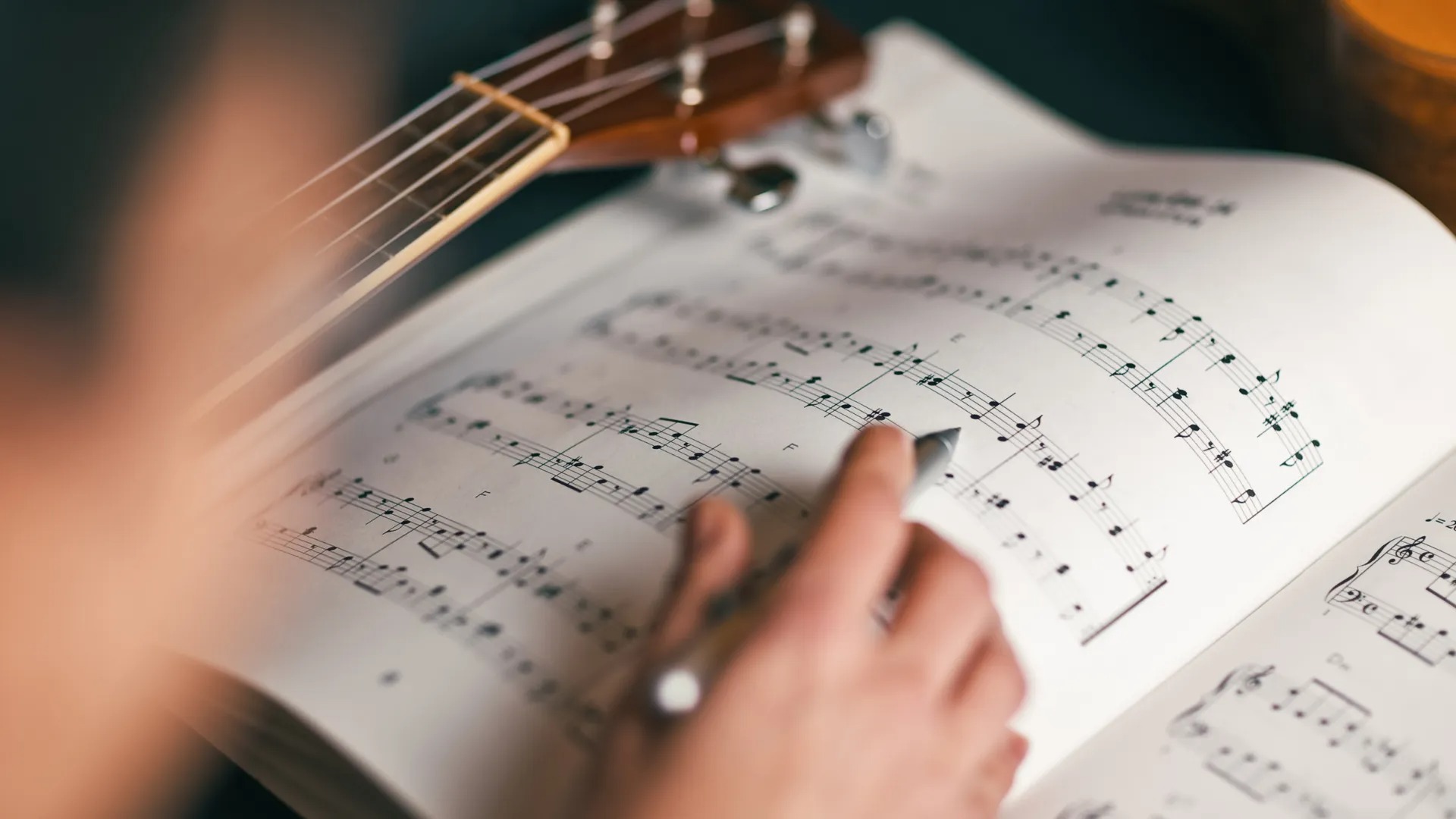

Music Theory
What You Need To Know For Basic Music Theory
Published: February 1, 2024
Learn the fundamentals of music theory and enhance your understanding of melody, harmony, and rhythm with our comprehensive guide. Discover the essential knowledge you need to excel in your musical journey.
(Many of the links in this article redirect to a specific reviewed product. Your purchase of these products through affiliate links helps to generate commission for AudioLover.com, at no extra cost. Learn more)
Table of Contents
Introduction
Welcome to the captivating world of music theory! Whether you’re an aspiring musician, a music enthusiast, or simply curious about how music works, understanding the basic concepts of music theory is essential. It forms the foundation upon which melodies, harmonies, and rhythms are created.
Music theory is the study of the principles and techniques that govern the structure and composition of music. It provides a systematic framework for analyzing and understanding the elements of music, such as pitch, rhythm, harmony, and form.
With a solid understanding of music theory, you’ll be able to read and write sheet music, improvise melodies, analyze and appreciate different musical styles, and communicate with other musicians effectively.
In this article, we’ll delve into the fundamentals of music theory, providing you with a comprehensive overview of the key concepts and terminology. By the end, you’ll have a solid grasp of the basics, setting you on a path to further exploration and musical excellence.
So, let’s embark on this musical journey and unravel the mysteries of music theory together!
The Staff
In the world of music notation, the staff is a set of horizontal lines and spaces used to represent musical notes. It provides a visual representation of pitch, showing how high or low a note sounds.
The staff consists of five horizontal lines and four spaces. From bottom to top, the lines and spaces represent different pitch levels. The lines are named, from bottom to top, E, G, B, D, and F, while the spaces are named F, A, C, and E.
To make it easier to identify the pitches represented by the lines and spaces on the staff, musical symbols called clefs are used. The most common clefs are the treble clef and the bass clef.
The treble clef, also known as the G clef, is commonly used for notating higher-pitched instruments such as the piano, violin, and flute. It is identified by its curly line which wraps around the second line of the staff, indicating that the line represents the note G above middle C.
On the other hand, the bass clef, also known as the F clef, is utilized for notating lower-pitched instruments like the bass guitar, cello, and tuba. It is characterized by a fancy line that starts at the top and spirals downward around the fourth line of the staff, indicating that the line represents the note F below middle C.
By using the treble and bass clefs, composers and musicians can indicate the appropriate pitches for their respective instruments, allowing for accurate reading and interpretation of music.
Understanding the staff and the clefs is crucial for any musician or aspiring composer. It serves as a visual roadmap, guiding us through the vast world of musical notes and melodies. With this knowledge in hand, you’re ready to dive deeper into the realms of music theory and explore the beauty of musical composition.
Clefs
Clefs play a vital role in music notation, indicating the position of musical notes on the staff. They are symbols placed at the beginning of each staff line to determine the pitch range of the written music.
The two most commonly used clefs are the treble clef and the bass clef. Let’s explore each of them:
Treble Clef (G Clef): The treble clef is easily recognizable by its curly line that wraps around the second line of the staff. This line represents the note G above middle C. The treble clef is generally used for notating higher-pitched instruments such as the piano, violin, and flute. It indicates that notes written on or above the staff lines are in the treble or soprano range.
Bass Clef (F Clef): The bass clef is identified by a fancy line that starts at the top and spirals downward around the fourth line of the staff. This line represents the note F below middle C. The bass clef is commonly used for notating lower-pitched instruments like the bass guitar, cello, and tuba. It indicates that notes written on or below the staff lines are in the bass or low range.
In addition to the treble and bass clefs, there are several other clefs used in specialized musical contexts. For instance:
- The alto clef is used primarily for the viola and certain other instruments, indicating the pitch range between treble and bass.
- The tenor clef is used for instruments like the cello and trombone, indicating a range slightly lower than the treble clef.
- The mezzo-soprano clef and soprano clef are used for specific vocal music notations.
By using different clefs, composers can accurately notate music for various instruments and voices, ensuring that the intended pitches are correctly represented on the staff. Understanding clefs is essential for musicians and composers, as it enables them to read, interpret, and perform music accurately.
Now that you have a good understanding of clefs, we can move on to exploring the fascinating world of musical notes and their representation on the staff.
Notes
In music theory, notes are the basic building blocks of melodies and harmonies. They represent specific pitches and durations, giving music its unique character and expression. Understanding how to read and interpret notes is fundamental to becoming a proficient musician.
Notes are represented on the staff as oval-shaped symbols placed on the lines and spaces. Each note is associated with a letter name from A to G, indicating the pitch of the sound it represents.
The position of a note on the staff determines its pitch. Notes on higher positions indicate higher pitches, while notes on lower positions represent lower pitches. The specific lines and spaces that notes occupy on the staff indicate their pitch levels.
The duration of a note is indicated by the shape of its symbol. There are different types of notes that represent varying durations:
- Whole Note (Semibreve): Represents four beats of sound.
- Half Note (Minim): Represents two beats of sound.
- Quarter Note (Crotchet): Represents one beat of sound.
- Eighth Note (Quaver): Represents half a beat of sound.
- Sixteenth Note (Semiquaver): Represents a quarter of a beat of sound.
- And so on, with several other note types for shorter durations.
The duration of a note can also be modified by adding flags or beams to the stem. For example, two eighth notes connected by a beam represent the same duration as one quarter note.
It is worth noting that the length of notes can be further altered by adding dots after the note symbol, which increases the duration by half of its original value. Dotted notes add a sense of rhythmic complexity and variety to music.
Rests are symbols used to indicate moments of silence or pauses in music. They have the same duration values as their corresponding notes. For instance, a quarter rest (a squiggly line) represents one beat of silence, just like a quarter note represents one beat of sound.
Mastery of note reading and understanding the relationship between pitch and duration is crucial for performing and composing music accurately. With a solid foundation in notes, you’ll be able to navigate the musical landscape with confidence and bring beautiful melodies to life.
Rests
In the realm of music notation, rests play an essential role in indicating moments of silence or pauses within a piece of music. They provide rhythmic structure and give musicians time to breathe and prepare for the next note or phrase.
Rests are symbols used to represent these moments of silence on the staff. They are written in a similar manner to notes, occupying the same positions on the lines and spaces.
Just like notes, rests come in different durations, each representing a specific length of silence:
- Whole Rest (Semibreve Rest): Represents four beats of silence, equivalent to the duration of a whole note.
- Half Rest (Minim Rest): Represents two beats of silence, equivalent to the duration of a half note.
- Quarter Rest (Crotchet Rest): Represents one beat of silence, equivalent to the duration of a quarter note.
- Eighth Rest (Quaver Rest): Represents half a beat of silence, equivalent to the duration of an eighth note.
- Sixteenth Rest (Semiquaver Rest): Represents a quarter of a beat of silence, equivalent to the duration of a sixteenth note.
- And so on, with rests for other shorter durations.
Similar to notes, rests can also be combined and modified to create rests with longer durations. For example, two eighth rests connected by a bar indicate the same duration as one quarter rest.
Rests are not just silent placeholders in music; they are essential elements that contribute to the overall rhythm and pacing. They add structure and allow for the proper interpretation and execution of musical phrases. Paying attention to rests while performing or reading sheet music is crucial to maintaining the intended timing and feel of a piece.
So, next time you encounter a rest on the staff, remember its duration and embrace the moment of silence it represents. Rests are as important as the notes themselves and contribute to the artistry and expressiveness of music.
Time Signatures
In music, time signatures provide crucial information about the underlying rhythmic structure of a piece. They denote the number of beats in each measure and the type of note that represents one beat. Time signatures act as a rhythmic roadmap, guiding musicians in their performance and interpretation.
A time signature is typically written as a fraction at the beginning of a musical composition, immediately following the clef. The top number of the fraction represents the number of beats in a measure, while the bottom number indicates the type of note that receives one beat. Common time signatures include 4/4, 3/4, and 6/8.
The most common time signature is 4/4, also known as common time. The top number indicates there are four beats in each measure, while the bottom number informs us that a quarter note represents one beat. This time signature is widely used in various musical genres, including pop, rock, and classical.
The time signature 3/4, known as simple triple meter, consists of three beats per measure, with the quarter note representing one beat. This time signature creates a waltz-like feel and is frequently found in classical music and traditional folk songs.
The time signature 6/8, known as compound duple meter, features six beats per measure, with the eighth note representing one beat. This time signature creates a strong rhythmic groove and is often heard in genres like jazz, blues, and soul.
Time signatures can also contain complex or irregular meter, such as 5/4 or 7/8, which deviate from the standard grouping of beats. These time signatures add a unique rhythmic flavor to music and are commonly found in progressive rock, fusion, and contemporary classical compositions.
By understanding the time signature, musicians can correctly interpret the rhythmic pattern of a piece and maintain a consistent tempo throughout. Paying attention to the meter allows for synchronized performances and facilitates collaboration among musicians.
Remember, time signatures serve as rhythmic signposts, helping musicians navigate the musical structure and maintain a cohesive performance. Embrace the time signature, let it guide your musical journey, and discover the rhythmic beauty that lies within.
Measures
In music notation, a measure, also known as a bar, is a unit of organization that divides a piece of music into smaller segments. It is delineated by vertical lines on the staff and contains a specific number of beats determined by the time signature.
A measure consists of two essential components: the beats and the notes or rests that fill those beats. The number of beats in a measure is dictated by the top number of the time signature. For example, a time signature of 4/4 indicates that there are four beats in each measure.
The total duration of notes and rests within a measure must add up to the number of beats defined by the time signature. For instance, in 4/4 time, the measure could be filled with four quarter notes, or combinations of various note durations that sum up to four beats.
The end of a measure is marked by a vertical line called a barline. Barlines help organize the music into distinct units and provide a visual cue for musicians to identify the boundaries between measures.
Measures serve several important purposes in music:
- Rhythm: Measures establish the rhythmic structure of a piece, ensuring that the notes and rests align with the specified beats.
- Phrasing: Measures help shape musical phrases and provide natural points for breathing or pausing.
- Coordination: Measures facilitate synchronization among musicians, as they can easily identify the beginning and end of each measure to stay aligned.
- Repetition: Measures make it easier to repeat and memorize specific sections of a piece, aiding in rehearsal and performance.
Understanding measures is fundamental for reading, interpreting, and performing music. It enables musicians to navigate through the notation, maintain the intended rhythmic structure, and bring a sense of cohesion to their playing.
So, as you encounter those vertical barlines on the staff, embrace them as guideposts that divide and organize the musical landscape, enhancing the rhythm and flow of the composition.
Key Signatures
In music theory, key signatures play a crucial role in determining the tonal center of a piece. They indicate the specific set of pitches or notes that form the foundation of a musical composition. Key signatures provide valuable information about the tonality and harmonic structure of a piece.
A key signature is commonly represented by a series of sharps (#) or flats (b) placed at the beginning of a staff, right after the clef and time signature. The placement of these accidentals on specific lines or spaces of the staff indicates which notes are altered throughout the entire composition.
The key signatures can appear in major or minor keys. A major key signature signifies that the piece is based on a major scale, while a minor key signature indicates that the piece is based on a minor scale. The number of accidentals in the key signature and their placement on the staff determine the key of the piece.
For example, a key signature with one sharp (♯) on the F line indicates that the piece is written in the key of G major or E minor. This sharp modifies the F note throughout the piece, raising it by a half step.
In contrast, a key signature with two flats (♭) on the B line and E space indicates that the composition is in the key of B♭ major or G minor. These flats lower the pitches of B and E by a half step.
Key signatures streamline the notation process by eliminating the need to write accidentals (sharps or flats) before each occurrence of altered notes in the composition. They provide a visual cue, alerting musicians to the specific pitches that are consistently altered throughout the piece.
By understanding key signatures, musicians can easily determine the tonality of a piece, anticipate the occurrence of altered notes, and perform with accuracy and musicality. Key signatures also aid in transposition, allowing musicians to effectively play a piece in different keys.
So, the next time you encounter a key signature at the beginning of a staff, embrace it as a roadmap to guide you through the intricate tonal landscape of the music, and let it shape your interpretation and expression.
Scales
Scales are an essential concept in music theory, serving as the foundation for creating melodies, harmonies, and chords. They provide a structured arrangement of musical pitches, forming the basis of musical composition and improvisation.
A scale is a series of ascending or descending pitches arranged in a specific pattern. It comprises a set of notes within an octave, creating a framework for organizing and understanding musical relationships.
The most common type of scale is the major scale. It consists of a sequence of seven notes, each a whole step or a half step apart. The pattern of whole and half steps is often represented by the formula “W-W-H-W-W-W-H” (whole-step, whole-step, half-step, whole-step, whole-step, whole-step, half-step). The major scale is widely used in various musical genres and is the foundation for much of Western music.
A minor scale is another fundamental scale type. It has a different pattern of whole and half steps: “W-H-W-W-H-W-W”. The natural minor scale is found in many sad or melancholic compositions. Variations of the minor scale include the harmonic minor and the melodic minor, which feature altered notes to create different tonal flavors.
Other scales, such as the pentatonic scale, blues scale, and chromatic scale, bring unique character and color to music. The pentatonic scale, for example, is a five-note scale used in many styles of music worldwide. It is known for its versatility and ability to create melodically pleasing patterns.
Scales can be transposed to different starting pitches, allowing musicians to explore different tonalities and keys while preserving the intervallic relationships of the original scale. This gives rise to an infinite number of melodic possibilities and allows for creative expression in composition and improvisation.
Understanding scales is vital for musicians as it provides a framework for improvisation, composition, and understanding the harmonic structure of music. By exploring and mastering various scales, musicians can expand their musical vocabulary and develop a deeper understanding of how melodies and harmonies are created.
So, delve into the intricate world of scales, experiment with different patterns, and let the unique combinations of pitches ignite your musical creativity.
Intervals
In music theory, intervals refer to the distance or space between two pitches. They provide a way to describe and measure the relationship between notes, forming the building blocks of melodies, harmonies, and chords.
Intervals are named based on the number of letter names they encompass and the distance between them in terms of steps. Each interval has a unique quality, determined by its size (number of letter names) and its quality (the number of half steps or semitones).
The basic intervals within an octave are:
- Unison: The interval between two identical pitches (e.g., C to C).
- Second: The distance of two adjacent letter names (e.g., C to D).
- Third: The distance of three adjacent letter names (e.g., C to E).
- Fourth: The distance of four adjacent letter names (e.g., C to F).
- Fifth: The distance of five adjacent letter names (e.g., C to G).
- Sixth: The distance of six adjacent letter names (e.g., C to A).
- Seventh: The distance of seven adjacent letter names (e.g., C to B).
- Octave: The distance of eight adjacent letter names (e.g., C to the next C).
Intervals can also be classified into two categories: perfect intervals and major/minor intervals. Perfect intervals are considered highly consonant and include the unison, fourth, fifth, and octave. Major and minor intervals, on the other hand, may have slight variations in their size due to alterations within scales.
For example, the interval between C and E is a major third, consisting of two whole steps or four half steps, while the interval between C and Eb is a minor third, comprising one-and-a-half steps or three half steps.
Intervals are essential for understanding and analyzing music. They allow musicians to recognize melodic patterns, create harmonies, and transpose music into different keys. Interval training is also beneficial for ear training, developing a strong sense of pitch and relative pitch recognition.
By studying intervals, you can enhance your understanding of how different notes relate to one another and use that knowledge to express yourself musically. So, embrace the beauty and significance of intervals in music, and let them inspire your melodic explorations.
Chords
In music theory, chords are the building blocks of harmony. They are formed by combining three or more notes played simultaneously, creating a rich and harmonious sound. Chords provide the foundation for supporting melodies, adding depth and texture to music.
The most basic type of chord is the triad, consisting of three notes stacked in thirds. Triads are categorized into major, minor, diminished, and augmented chords, each with its unique sound and emotional quality.
A major chord is constructed by playing the root note, a major third above the root, and a perfect fifth above the root. Major chords often evoke feelings of brightness and positivity. For example, a C major chord includes the notes C, E, and G.
A minor chord is built by playing the root note, a minor third above the root, and a perfect fifth above the root. Minor chords often convey a sense of melancholy or introspection. For instance, a C minor chord includes the notes C, Eb, and G.
Diminished and augmented chords add additional layers of tension and color to music. Diminished chords consist of a root note, a minor third above the root, and a diminished fifth above the root. Augmented chords, on the other hand, include a root note, a major third above the root, and an augmented fifth above the root.
Chords can be played on various instruments, including piano, guitar, and other pitched instruments. They can be strummed, arpeggiated, or played in different inversions to create different harmonic progressions and voicings.
Understanding chords is crucial for songwriting, arranging, and improvisation. By recognizing and playing different chord structures, musicians can create harmonic progressions that support the melody and evoke specific emotions. Chords also serve as a basis for accompanying other musicians and adding harmonies to vocal performances.
As you learn and explore chords, you’ll begin to understand their relationships with one another and how they contribute to the overall musical composition. So, embrace the interplay of notes within chords and unlock the power of harmony in your musical endeavors.
Chord Progressions
In music theory, chord progressions are the sequence of chords played in a specific order. They form the backbone of a song, providing a sense of structure and movement. Chord progressions help shape the emotional and harmonic aspects of music, creating tension, resolution, and musical interest.
A chord progression is typically represented using Roman numerals, indicating the relationship between chords rather than specific notes. This allows the progression to be easily transposed to different keys.
Common chord progressions include the I-IV-V progression, which is prevalent in many popular songs. In this progression, the first chord (I) is followed by the fourth chord (IV) and then the fifth chord (V). This sequence creates a sense of stability and tension, leading to a resolution back to the first chord.
Another widely used progression is the ii-V-I progression, often found in jazz and blues. It consists of the second chord (ii), the fifth chord (V), and finally, the tonic chord (I). This progression adds a sense of tension and release, creating a satisfying resolution back to the tonic chord.
Chord progressions can also vary in complexity and length, with some songs featuring intricate progressions spanning multiple chords or modulating to different keys. Experimenting with different chord progressions opens up a world of creative possibilities, allowing musicians to craft unique and captivating musical compositions.
Understanding chord progressions is essential for songwriters, as they provide the groundwork for melodies and lyrics. By choosing the right progressions, songwriters can evoke specific emotions or enhance the storytelling aspect of their music.
When learning to play an instrument, studying chord progressions enhances your ability to accompany other musicians, improvise, and interact within a musical context. It trains your ear to recognize common progressions and anticipate chord changes.
So, immerse yourself in the world of chord progressions and experiment with different sequences. Explore the vast array of possibilities, and uncover the magic that occurs when chords come together to create memorable musical journeys.
Basic Notation
Music notation is the written language of music, allowing musicians to read and interpret musical ideas accurately. Notation provides a standardized system for representing musical elements such as pitch, rhythm, dynamics, and more.
The basic components of music notation include the staff, clefs, notes, rests, and various symbols that convey additional musical instructions. Here’s a breakdown of these fundamental elements:
The Staff: The staff consists of five horizontal lines and four spaces. It provides a visual representation of pitch, with higher pitches placed on higher lines and lower pitches placed on lower lines.
Clefs: Clefs indicate the pitch range of the notes on the staff. The most common clefs are the treble clef (G clef), typically used for higher-pitched instruments, and the bass clef (F clef), commonly used for lower-pitched instruments. Other clefs, such as alto and tenor clefs, are used for specific instruments.
Notes and Rests: Notes represent the pitch and duration of a musical sound, while rests symbolize moments of silence or pauses. Notes are oval-shaped symbols placed on the lines and spaces of the staff, while rests take various forms depending on their duration.
Dynamics: Dynamics indicate the loudness or softness of the music. Terms such as fortissimo (very loud), piano (soft), and crescendo (gradually getting louder) are used to guide the performer in expressing the desired volume level.
Articulations: Articulation symbols provide instructions on how to perform and shape each note. Examples include staccato (short and detached), legato (smooth and connected), and accent (emphasis on a note).
Tempo Markings: Tempo markings indicate the speed at which a piece should be performed. Common tempo markings include allegro (fast), andante (moderate tempo), and adagio (slow).
Repeats and Codas: Repeat signs and codas help organize the structure of a piece with instructions on which sections should be repeated or skipped, adding clarity to the overall performance.
Mastering basic notation is essential for reading and interpreting sheet music accurately. It allows musicians to communicate and perform music as intended by the composer. With practice and familiarity, musicians can easily navigate through complex musical scores and bring the written music to life.
So, embrace the world of basic notation, let the symbols guide your musical journey, and unleash your creativity by bringing the written music to life through your interpretation.
Dynamics
In the realm of music, dynamics refer to the variations in volume or intensity within a musical piece. Dynamics add expressiveness, nuance, and emotional depth to the music, allowing it to evoke different moods and create a captivating listening experience.
Dynamics are indicated in sheet music using specific symbols and Italian terms that provide instructions to performers on how loud or soft to play. Here are some common dynamic markings:
- Fortissimo (ff): This marking instructs musicians to play very loudly, emphasizing power and intensity.
- Forte (f): Forte indicates playing loudly. It represents a strong volume, but not as forceful as fortissimo.
- Moderato (mf): Moderato suggests a moderate volume level, neither too loud nor too soft.
- Mezzo Piano (mp): Mezzo piano indicates playing moderately soft, providing a gentle and subdued sound.
- Piano (p): Piano instructs musicians to play softly, creating a delicate and quiet sound.
- Pianissimo (pp): Pianissimo signifies playing very softly, producing a whisper-like and delicate sound.
- Crescendo (cresc.): This marking indicates a gradual increase in volume, getting progressively louder.
- Decrescendo or Diminuendo (decresc. or dim.): These markings represent a gradual decrease in volume, getting progressively softer.
- Sforzando (sfz): Sforzando instructs a sudden, strong accent on a particular note or chord, creating a brief but pronounced emphasis.
Dynamics serve as a means of interpreting the composer’s intentions and adding musical expressiveness. They allow performers to shape phrases, emphasize certain moments, and create contrast between sections.
It’s worth noting that dynamics are not fixed and can be subject to interpretation based on the musical genre, style, and personal artistic choices. Musicians are encouraged to bring their creativity and sensitivity to dynamics, letting the music guide their choices of volume and intensity.
By paying attention to dynamics, musicians can communicate with the audience, conveying emotions, and creating a captivating musical experience. Dynamic markings allow for the ebb and flow of intensity, enhancing the overall narrative and impact of the music.
So, embrace the power of dynamics as you perform or listen to music, and let the varying volumes and intensities take you on an emotional journey through the beautiful world of sound.
Tempo Markings
In music, tempo refers to the speed or pace at which a piece of music is performed. Tempo markings provide precise instructions to performers on the desired tempo of the music, allowing for consistent and unified interpretations.
Tempo markings are indicated in sheet music using Italian terms, which have become standard in the music world. These terms provide a general indication of the tempo, although their exact interpretation may vary slightly based on context and musical style. Here are some commonly used tempo markings:
- Grave: Very slow and solemn, indicating a funeral or solemn processional tempo.
- Largo: Broad and slow, suggesting a solemn and stately pace.
- Adagio: Slow and graceful, often conveying an air of calmness and tranquility.
- Andante: Moderately slow and flowing, providing a walking pace tempo.
- Moderato: Moderate tempo, suggesting a steady and balanced pace.
- Allegro: Fast and lively, indicating a brisk and energetic tempo.
- Vivace: Lively and quick, suggesting a vibrant, lively tempo.
- Presto: Very fast, indicating a rapid and energetic tempo.
- Accelerando: Gradually increasing the tempo, playing faster as the music progresses.
- Ritardando: Gradually slowing down the tempo, creating a sense of deceleration.
It’s important to note that while tempo markings provide a general guideline, they can be interpreted differently based on the style, genre, and artistic intentions of the composer or performer. For example, an allegro tempo in classical music may differ from an allegro tempo in jazz.
Performers bring their interpretation and artistic choices to tempo markings, allowing for individual expression and dynamics within the given tempo. Subtle variations in tempo, known as rubato, are often employed to add expression and shape to the music.
Understanding tempo markings is essential for musicians to perform together in an ensemble, maintain cohesion, and effectively convey the intended character and mood of the music. A well-executed tempo can enhance the emotional impact and overall musical experience for both performers and listeners.
So, embrace the tempo markings as your guide, allowing them to shape and define the rhythmic journey of the music. Let the tempo propel you, and immerse yourself in the beautifully interconnected elements of rhythm and pace.
Musical Terms
In the world of music, numerous terms are used to describe various aspects of composition, performance, and theory. These musical terms, often in Italian or other languages, provide musicians with valuable instructions and descriptions to enhance their understanding and interpretation. Here is a selection of commonly used musical terms:
- Arpeggio: Playing the notes of a chord consecutively, creating a broken chord effect.
- Cadenza: An improvised or written-out solo passage, usually performed towards the end of a concerto movement.
- Chromatic: A musical scale consisting of all the half steps within an octave.
- Fermata: A symbol indicating a sustained note or rest, to be held longer than its indicated value.
- Legato: Notes played or sung smoothly and connected, with minimal separation between them.
- Melisma: A group of notes sung to a single syllable, often used in vocal ornamentation or vocal runs.
- Ornamentation: Musical embellishments or decorations added to a melody or chord progression.
- Pizzicato: A technique used in string instruments where the strings are plucked with the fingers instead of using a bow.
- Rubato: A slight fluctuation in tempo for expressive purposes, allowing for subtle deviations from the strict rhythm.
- Syncopation: Accentuating or emphasizing the off-beat or weak beats in a rhythmic pattern.
- Tremolo: Rapidly repeating a single note or alternating between two or more notes.
- Vibrato: A slight and controlled fluctuation in pitch to add warmth and expressiveness to a sustained note.
- Augmentation: Lengthening the duration of notes or intervals in a melody or musical phrase.
- Diminution: Shortening the duration of notes or intervals in a melody or musical phrase.
- Staccato: Notes played or sung in a detached and short manner, distinctly separated from one another.
- Tutti: A term used in ensemble music, indicating that all performers should play together.
These are just a few examples of the vast array of musical terms used in music notation, performance, and composition. Familiarity with these terms allows musicians to communicate efficiently, understand musical directions, and apply appropriate techniques.
By expanding your knowledge of musical terms, you’ll have a deeper understanding of the intricate language of music. Embrace these terms as your key to unlock the nuances and subtleties within the music you perform or listen to, and let them fuel your musical journey.
Conclusion
Congratulations! You have embarked on a journey through the captivating world of music theory. By delving into the fundamental concepts of the staff, clefs, notes, rests, time signatures, scales, intervals, chords, chord progressions, basic notation, dynamics, tempo markings, and musical terms, you have gained a solid foundation in understanding and interpreting music.
Music theory serves as a guiding force that empowers musicians to read, write, and communicate through the universal language of music. It provides a framework for analyzing, composing, and performing, allowing musicians to express their creativity while staying rooted in the principles that govern the art form.
As you continue your musical journey, remember that music theory is not meant to be a restrictive set of rules, but rather a tool that helps you navigate the infinite possibilities within the realm of music. It provides a solid framework that allows for artistic interpretation and individual expression.
Whether you are a performer, a composer, or simply an avid listener of music, understanding music theory enriches your experience by deepening your appreciation and comprehension of the intricate elements that make up a musical composition.
So, as you immerse yourself in the world of music theory, harness the power of knowledge, creativity, and passion to unlock the boundless potential within you. Let the theories and concepts you have learned guide you, but also embrace your own unique voice and creativity as you embark on your musical endeavors.
Remember, music theory is a lifelong journey of exploration and growth. The more you delve into its intricacies, the more you will unearth the wonders and depths of the enchanting world of music. Enjoy the process, seek inspiration, and let the magic of music guide you on your path towards musical excellence.

